
Map detail from “A New & Exact MAP of the Coast, Countries / and Islands within y.e LIMITS of y.e / SOUTH SEA COMPANY, / from y.e River Aranoca to Terra del Fuego, and from thence / through y.e South Sea to y.e North Part of California &c. / with a View of the General and Coasting TRADE-WINDS. / And particular Draughts of the most important Bays, Ports &c. / According to y.e Newest Observations, By Herman Moll Geographer,” ca. 1740 (originally published in 1711), London, England. (Courtesy, Colonial Williamsburg Foundation.)
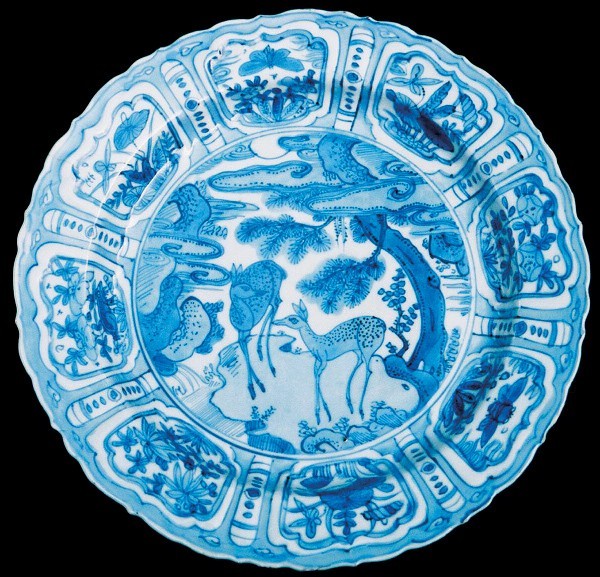
Dish, China, Wanli period, 1573–1620. Hard-paste porcelain. D. 8 5/16". (Courtesy, Thomas Lurie.)

Bowl fragment, China, late sixteenth century. Hard-paste porcelain. Excavated by Felipe Gaitan-Ammann at the house of the Genoese slave traders, Panama. (All archaeological fragments courtesy, Mirta Linero Baroni, Jefe de Arqueología, Patronato Panamá Viejo.)
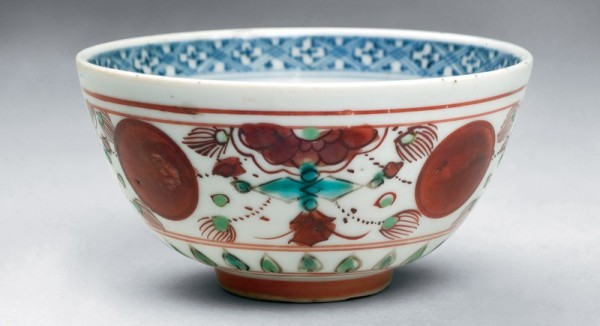
Bowl, China, sixteenth century. Hard-paste porcelain with underglaze blue and red and green overglaze enamels. D. 3 5/8". (Courtesy, Museum Het Princessehof, Leeuwarden.)
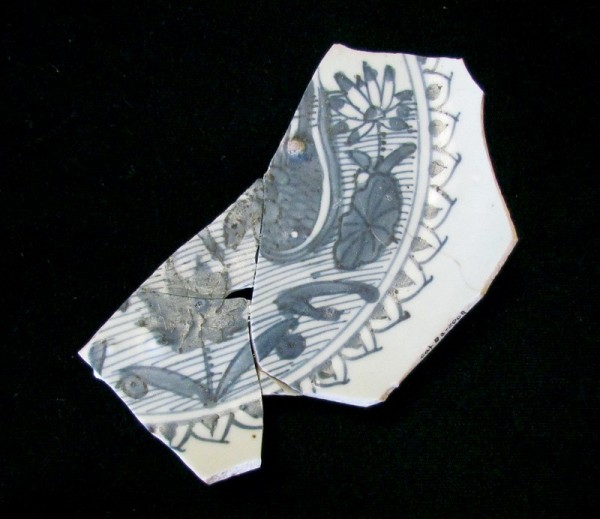
Dish fragment, China, ca. 1565. Hard-paste porcelain with underglaze blue decoration. Excavated by Felipe Gaitan-Ammann at the house of the Genoese slave traders, Panama.
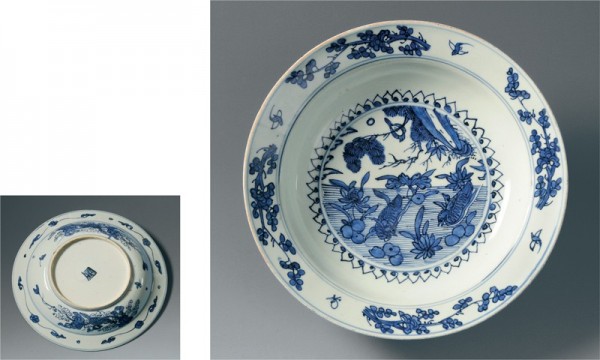
Dish, China, ca. 1550. Hard-paste porcelain with underglaze blue decoration. D. 12". (Courtesy, Frides Lameris Art and Antiques, Amsterdam, Netherlands.)
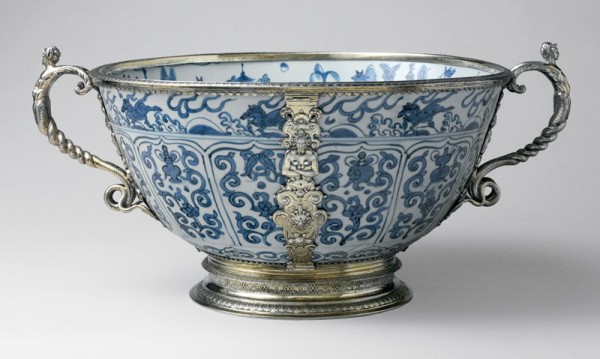
Bowl, China, ca. 1585; mounts, London, 1575–1585. Hard-paste porcelain with English silver-gilt mounts. H. 8 1/2", D. including handles 18 1/4". (Courtesy, The Metropolitan Museum of Art, Rogers Fund, 1944.)

Bowl fragment, China, 1573–1620. Hard-paste porcelain with underglaze blue decoration. Excavated at the convent of the Monastery of the Concepción, Panama.
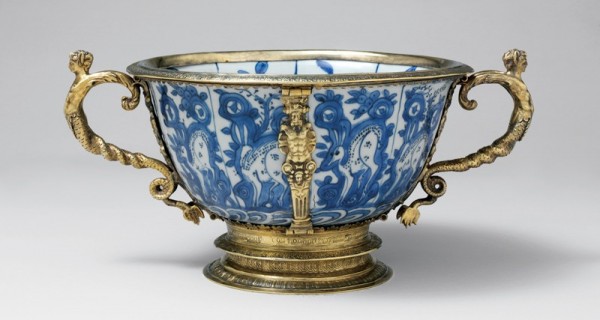
Bowl, China, ca. 1585; mounts, London, 1575–1585. Hard-paste porcelain with English silver-gilt mounts. H. 6 1/4", D. including handles 13". (Courtesy, The Metropolitan Museum of Art, Rogers Fund, 1944.)
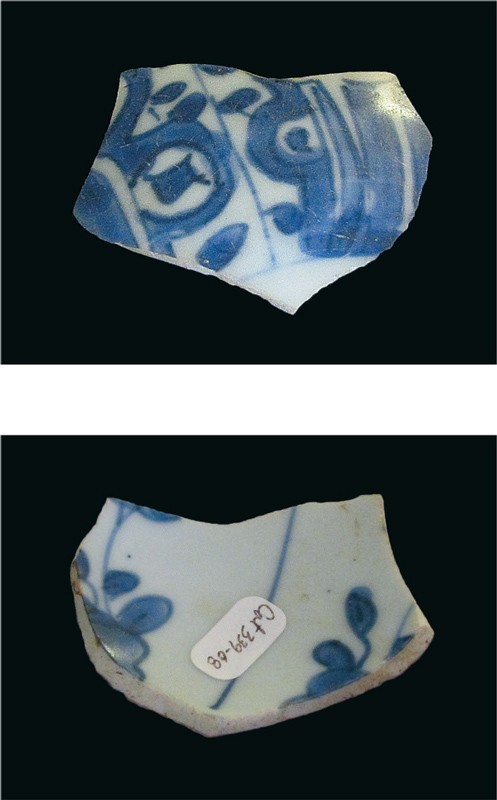
Bowl fragments, China, 1573–1620. Hard-paste porcelain with underglaze blue decoration. Excavated at the convent of the Monastery of the Concepción, Panama.

Dish fragment, China, 1573–1620. Hard-paste porcelain with underglaze blue decoration. Excavated at the convent of the Monastery of the Concepción, Panama.

Dish fragment, China, 1573–1620. Hard-paste porcelain with underglaze blue decoration. Excavated at the convent of the Monastery of the Concepción, Panama.
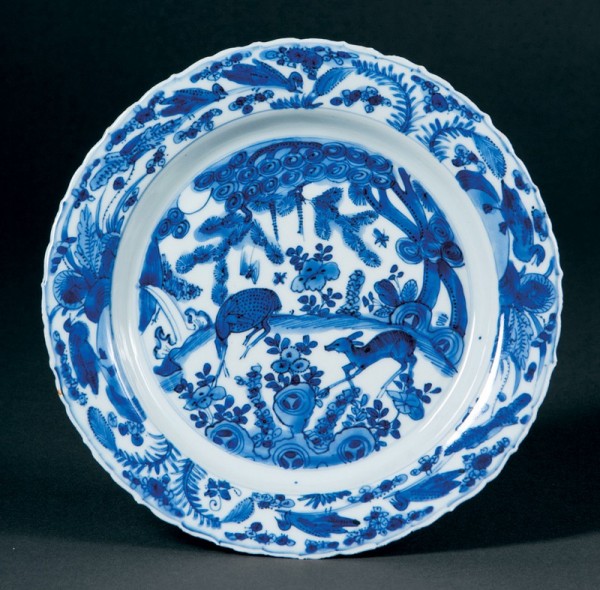
Dish, China, 1573–1620. Hard-paste porcelain with underglaze blue decoration. D. 14". (Courtesy, Collection of Thomas Lurie.)

Dish fragment, China, 1573–1620. Hard-paste porcelain with underglaze blue decoration. Excavated by Felipe Gaitan-Ammann at the house of the Genoese slave traders, Panama.
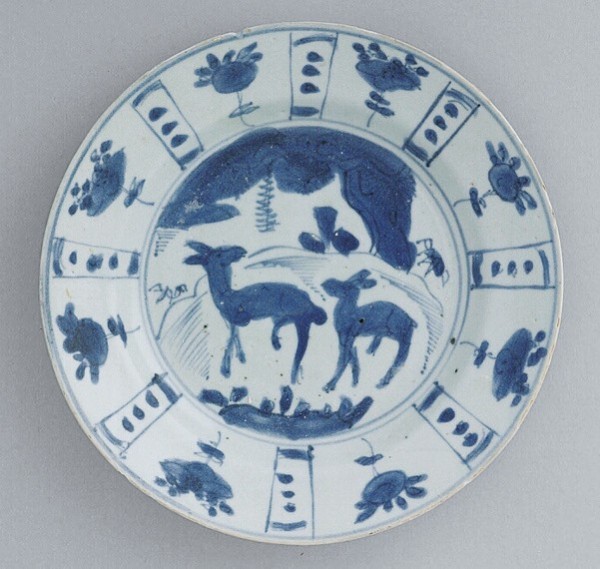
Dish, China, ca. 1625. Hard-paste porcelain with underglaze blue decoration. D. 8 3/8". This dish was recovered from the 1625 wreck of the Wanli, a Portuguese ship laden with Chinese ceramics that sank en route from Macao to the Straits of Melaka. (Courtesy, Sten Sjostrand and Nanhai Marine Archaeology.)

Dish fragment (front and back), China, 1573–1620. Hard-paste porcelain with underglaze blue decoration. Excavated at the convent of the Monastery of the Concepción, Panama.
